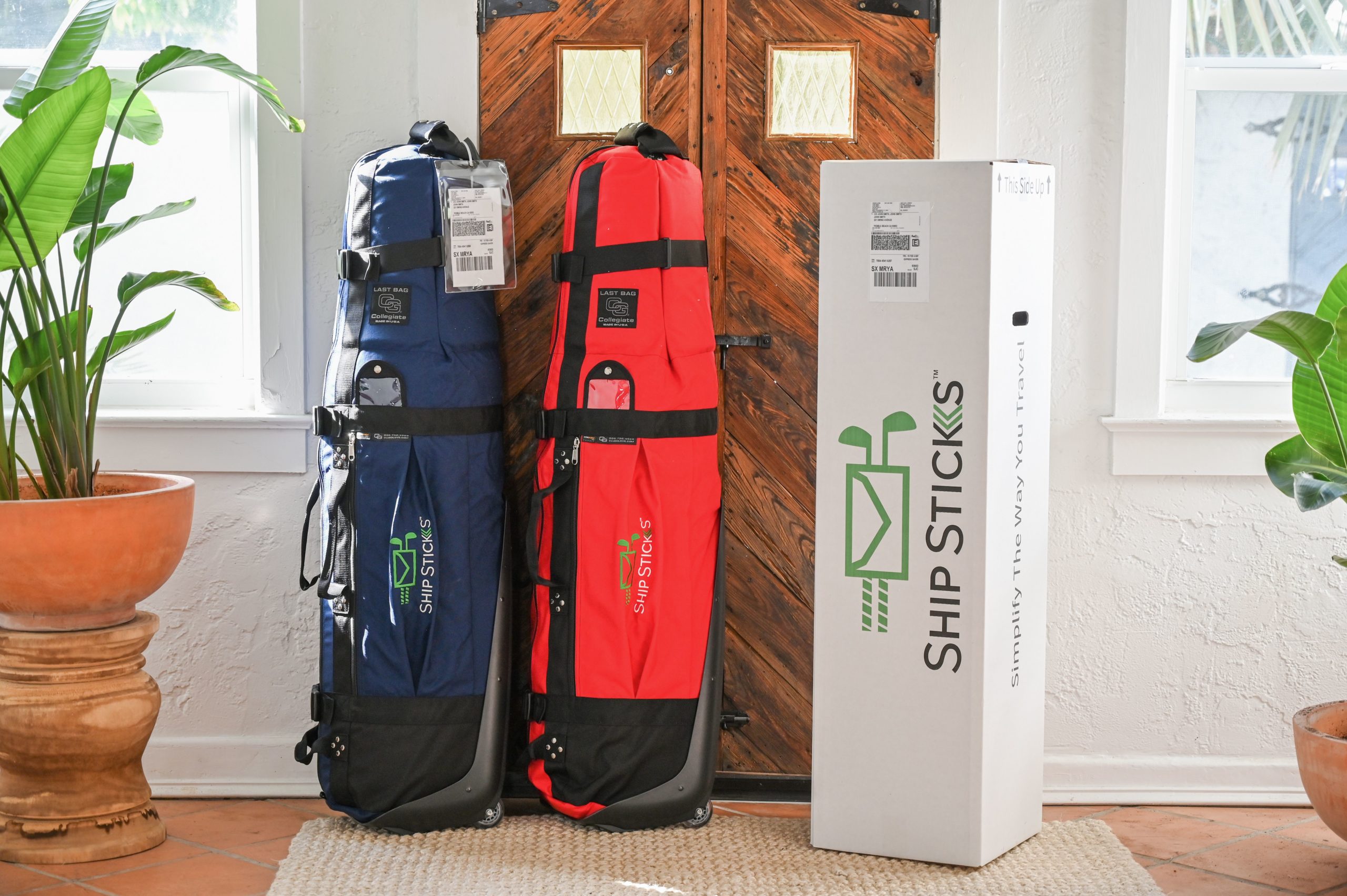Youth Caddie Academies – A Growing Niche
There was a time when caddying helped grow golf, bringing in generations of youngsters through a job that started and shaped their relationship with the game.
Today, in an era when most teenagers would rather pick up a phone than a golf bag, youth caddying has been fighting to stay as relevant as it was in years past. However, organizations like the Solich Caddie & Leadership Academy, Youth on Course Caddie Academy, and the Western Golf Association’s Carry the Game advocacy group are helping to put more bags on more shoulders every year.
These efforts are the byproduct of former youth-caddies-turned-dedicated-golfers who recognize how caddying can make an immeasurable impact on a kid’s life, including developing social skills, work ethic, financial responsibility and overall maturity.
“I’d love to see more kids have opportunity to have access to caddie programs,” says Ed Mate, who helps run the Solich Academy’s three Denver-area chapters as executive director of the Colorado Golf Association. “I don’t see caddying or caddie programs as a way to develop new golfers in large numbers, but it certainly can do it in small numbers. I see caddie programs as really leadership and vocational training. We talk so much about the life skills that golf entails.”
Mate has experienced it first-hand. He grew up caddying at Denver Country Club and is a graduate of the University of Colorado, which he attended on a Chick Evans Caddie Scholarship. Mate acknowledges that it’s hard to change culture, and that the culture of golf in the U.S. is based on having a cart rather than the tried-and-true traditions of the game. But he firmly believes there’s a pocket of golfers who really want to employ a caddie, particularly a youngster. Thus, the role of the Solich Academy (and others like it) is to make it as easy as possible for that person to enjoy the benefits of a youth caddie.

Two junior caddies from the Solich Academy in Colorado. (Photo courtesy: Colorado Golf Association)
In addition to being a great introduction to golf and all it teaches, youth caddie programs also provide an opportunity for a young man or woman to have his/her first job, learn to interact with adults, be outside and have the potential to earn a college scholarship, says Geoff “Duffy” Solich, an oil and gas executive who founded the academy with his brother, George. Both grew up caddying at The Broadmoor in Colorado and received Evans Scholarships.
“For the golfer, you get to hang out with and get to know a 14- to 17-year-old young person who has such a different perspective on life,” says Solich. “Without a doubt the golfer gets more from the interaction than the caddie. These are amazing kids who have great stories to tell and it becomes very easy to forget about a bad shot or two with them on your bag.”
NGF research estimates that close to 30,000 caddies worked at least one loop within the past year and, despite the experienced or veteran caddies found at major resorts and top private clubs, the majority are in their teens.
“Caddying is a great way to meet some potential mentors and people who can help your life in other ways,” said Michael Lowe, Vice President of Programs for Youth on Course, a non-profit based out of Poppy Hills Golf Course in Pebble Beach, California. Currently, Youth on Course helps facilitate caddie programs at 17 clubs in Northern California, including the Olympic Club and California Golf Club.

Youth on Course works with 17 caddie programs in Northern California. (Photo courtesy: Youth on Course)
Approximately 10% of golfers said they used a caddie in the last year and the majority of those were at private clubs. More than 90% of all caddies work at private clubs. Mate realizes there’s a disconnect when it comes to most public golfers and caddies, even though three of the four facilities the Solich Academy is affiliated with are open to public play.
“The caddie and the typical golfer is kind of a round peg in a square hole,” Mate says. “We have 32,000 rounds of golf annually at CommonGround (Golf Course in Denver). If we’re lucky, 1,000 of those will be played with a caddie. We know those 1,000 are going to come from a very small handful of golfers.”
A MILWAUKEE START-UP

Caddies from the Caddie & Leadership Academy near Milwaukee meet with PGA TOUR caddies at the BMW Championship in Chicago.
For those looking to start a youth caddie academy of their own, Mate is happy to share advice and even has a “starter kit” document for interested parties.
Phil Poletti introduced the Caddie & Leadership Academy in the Milwaukee area after Golf Channel aired a feature on the Solich Academy. A rules official on the USGA’s championship committee, Poletti has worked with the WGA and was inspired by how its caddie scholarship program impacts kids’ lives.
Since 1930, the Evans Scholarship has provided more than $385 million in tuition and housing to high-achieving caddies with significant financial need. The annual scholarship provides about $23 million, making it one of the nation’s largest privately funded scholarship programs. The WGA also operates Carry the Game, a nonprofit advocacy group that works to promote the role of caddying and increase the number and diversity of youth caddies throughout the U.S.
Poletti’s program in Milwaukee initially failed to get off the ground.
Set to debut with 20 kids at a little municipal course in Kenosha, Wisconsin, it was scuttled by the city manager on the eve of its launch due to liability concerns. Today, Poletti’s academy is entering its sixth season and has 40 kids spread over three chapters, only 30% of whom had ever set foot on a golf course before. Almost half of the kids are at Brown Deer Park Golf Course, where Tiger Woods in 1996 made a hole-in-one during his PGA TOUR debut at the Greater Milwaukee Open.
Poletti recalls telling the story to a 14-year-old trainee when they got to the par-3 14th hole that Woods had aced.
“At the end, she says, ‘Who’s Tiger Woods?’” Poletti said with a laugh. “I remember telling Tiger’s caddie, Joey LaCava, that story and he howled.”
Like the programs in Colorado, Poletti’s caddie academy follows a unique model in which participants are paid through an educational grant and considered independent contractors rather than employees. In order for kids to qualify, they have to be available three days a week, attend a mandatory leadership training weekly, and do two community service hours a month. Once they meet the criteria, they get $100 per week, which works out to roughly $33 per loop.
In turn, facilities don’t have to classify the youngsters as employees and face laws, costs and taxes that would add additional challenges and costs to a caddie program. With the fee subsidized through grant donations, public golfers aren’t responsible for paying a minimum wage fee for five hours and only have to give a tip if they want. Most do, but first it’s a matter of changing the golfer’s mindset.
“We have signs out that say ‘complimentary caddies’ and people are wondering what they’re getting themselves into,” Poletti says. “At a public golf course, that’s hard for them to digest and swallow. We’ve tried to spread the message so when they make a tee time, they understand what the program is all about. Every year, it’s getting a little easier.”
Another barrier: the potential of lost cart revenue.
“You have to have someone who gets it; someone who understands it’s not always about the revenue, but about the opportunity to give these kids a chance to spend four-plus hours with somebody who’s not their parent or teacher,” says Poletti. “For many, it’s the first time they’re having the opportunity to do that.”
CALIFORNIA CADDIES

Youth on Course works with 17 youth caddie programs in Northern California. (Photo courtesy: Youth on Course)
While caddie programs are prevalent at many affluent private clubs in the northeast U.S., caddies aren’t as abundant on the west coast. Goat Hill Park in Oceanside, California, adopted the subsidized-fee model and recently had about 15 youngsters, including a set of twin sisters, in its summer caddie academy.
In Northern California, Youth on Course continues to grow youth caddying.
“It’s really a culture shift,” Lowe says of the California caddie scene. “There weren’t really any caddie programs out here. We want any young person in Northern California to have the opportunity to caddie. We want to do it where there’s a good size population and where we can go to a Boys and Girls Club or Girls Inc. and use caddying as an introduction to golf.”
Caddying helps kids like Oakland, California teenager Chingun Baatar, who came to Youth on Course’s Caddie Academy in 2015. Moving to the U.S. from Mongolia in middle school, Baatar had limited golf knowledge before going through the program’s orientation at nearby Claremont Country Club.
“You could tell he was a super shy kid, didn’t talk a ton, and had never set foot on a golf course,” Lowe said. “For kids who have played the game, caddying can be somewhat easy to pick up. But you get a new kid like him, it can be hard. They don’t even know how to pick up the bag.”
Club members and other employees took Baatar under their collective wings. Eventually, Baatar became a part-time employee of the club, earning an hourly salary as a high school student. He will go off to college in the fall.
Among those who caddied in the Youth on Course program, 92 percent say it helped improve their communication, 90 percent report being more responsible, and 85 percent say they’re more confident.
“When members of the club talk about him now, they talk about how much caddying helped him develop his social and his language skills,” Lowe said of Baatar. “Caddying helped him get an hourly job and a career opportunity in the golf industry and played a huge role in his success.”

The youth caddies at the Solich Academy work at three public courses in the Denver area. (Photo courtesy: Colorado Golf Association)
Mate is encouraged by the grassroots efforts he’s seen from various caddie academies around the country. He suspects more will follow, giving more kids not only an introduction to golf, but providing them with valuable life lessons.
“I don’t know that I’d call it a trend yet, but it’s cool to see,” Mate says. “I think you’re going to see more popping up. And like anything, you’ll see some that are heavily based on our model and others on new ideas, or hopefully even better.”
Short Game.
"*" indicates required fields
How can we help?
NGF Membership Concierge

"Moe"
Learn From NGF Members
 Ship Sticks Secrets to a Hassle-Free Buddies Golf Trip
Ship Sticks Secrets to a Hassle-Free Buddies Golf Trip
Whether you’re the head planner of your upcoming buddies golf trip or simply along for the ride, we’ve gathered a few easy ways to keep everyone in your group happy.
Read More... Golf Course Turf, Soil and Water Quality Diagnostic Testing
Golf Course Turf, Soil and Water Quality Diagnostic Testing
As humans, we see our primary care physician on a regular basis to proactively evaluate our vital signs. Likewise, a superintendent should perform frequent diagnostic testing on their golf course.
Read More... Unlocking Distance: Launch Conditions and Angle of Attack
Unlocking Distance: Launch Conditions and Angle of Attack
We’ve long known that higher launch and lower spin is a powerful combination for generating consistently long and straight tee shots. A key factor in optimizing launch conditions, one often overlooked, is ...
Read More...


